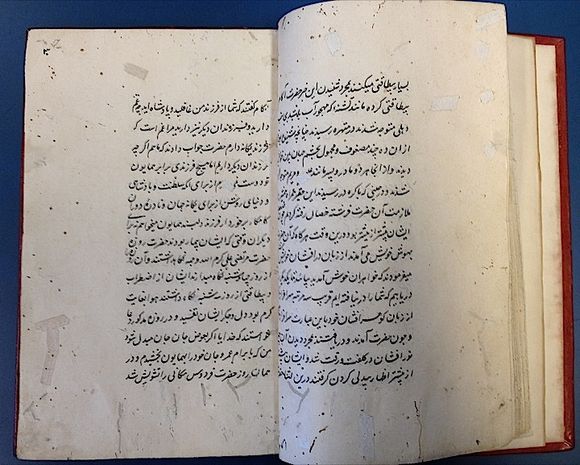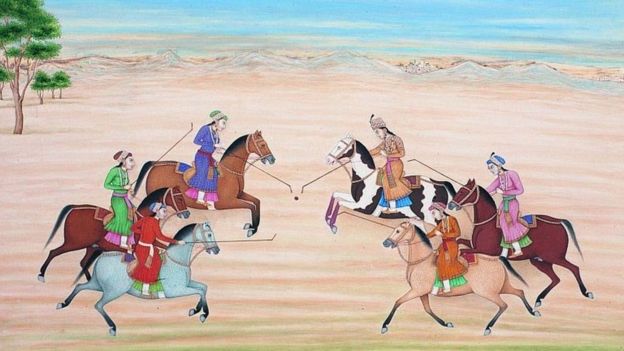Revisiting the Silence in the Archives
Amidst the 21st century as India grows, it is bound to review the part of legacy that is relevant in the 16th and 17th century. The Medieval Mughal history is an important era of development in terms of art, architecture, literature and culture. However, the history of gender is the most webbed aspect of the Indian history. The silence in the archives around the Indian women has to be explored and removed from the dominant narratives which are overshadowing. When we trace the Mughal period there are many fascinating vignettes that emerge.
The Mughal period saw the intermingling of spaces which was earlier demarcated into public /private. Sovereignty that was defined only in terms of masculine power and domination got inclusive and accommodating as well. Rosalind O’Hanlon have brought to light the political nature of the Harem contesting the sexualized imaginary that merely emerged with sensationalistic tone of writings by Manucci and Bernier, with Harem being only a place of pleasure and entertainment, walled and veiled. In the words of Ruby Lal, by the time of Akbar, a broad transition took place with a shift from the peripatetic lifestyle of early Mughals to a more settled domestication of women. Thus, Harem was a place of political intrigue in which women not only forged matrimonial alliances but also participated in diplomatic exchanges .
Gulbadan Bano Begum’s “Ahval-i-Humayun Badshah” is a blow on the perceived notions of women’s low agency and rationality. Her text opens up some fascinating arenas of the Mughal history. Feminist writings have shown in many context that a large part of human experience falls out of history but Gulbadan’s text contest and draws attention to the complexity of relationships that existed in the Mughal Harem.

Source: https://blogs.bl.uk/asian-and-african/2013/01/a-mughal-princesss-autobiography.html
The Challenge of a Princess ‘s Memoir mentions about the Hajj of the imperial women led by Gulbadan Bano Begum. The Hajj by all means show a bold and unparalleled event in the Mughal history which maps the assertion of agency and desires of imperial women challenging the restrictive constraints of the male centric journey. Abul Fazl records the event in the Akbarnama in a lavish way. It shows the Mughal imperial women negotiating the prescriptive thereby recasting the imperial vision along with the imperial court and household space.
Ruby Lal in her work Historicizing the Harem

Courtesy:- the Metropolitan Museum of Art
When we talk about women in Mughal India there are various names weaving in and out who contested the elite female seclusion alternately challenging the constructions of elite masculinity. Gulbadan Bano Begum writes about Hamida Bano Begum, who was not a woman to be swayed by royal protocol or pomp, resisting the proposal to Humayun, ‘’I shall marry someone, but he shall be a man whose collar my hand can touch and not someone whose skirt it doesn’t reach!’’ This particularly portrays a kind of aura that she carried, Gulbadan goes forward to portray women’s choice in manners of matrimony, the importance of equal status and power .
Noor Jahan is another extraordinaire of the Mughal history, a woman of splendour, legacy and remarkably powerful female figure. In the patriarchal era of Mughal India where women were still negotiating the power relationships that existed, Noor Jahan was a woman of talent, ability and potential. She went on to the hunting expeditions, built sarais and introduced new textiles. Her perusal and consent were necessary before any document received legal validity. The two most important prerogatives of the imperial court: the Sikka and Qutba was read in her name. She was a co-sovereign and one of a true example of a classic matriarchs in Mughal India.
Even the food and feasts in the Mughal history were occasions deeply enriched with political process and imaginary. The women who were responsible for the ritualized hierarchy as the principle of domestic Universe, looked after the arrangement and execution of these royal feasts. They had the authority to determine hierarchies, arranging the major dynastic events such as marriages, royal welcoming committees, diplomatic exchanges between Amirs and Princes, the order of sitting and serving and in what order the feasts would take place. Thus, the royal feasts were actions wrapped in a web of symbolism where senior Mughal women were symbolic of authority, hierarchy, opulence, power and agency.
However, the feminist historians have find it over the years that the history of Mughal imperial women have been highly belittled, trivialized and neglected. The dominant descriptive has led to the
overshadowing and blurring of the facts painting women in a single brush, not situating them in their culture, ideology and socio-economic conditions. Thus, the recorded history points to the history of subjectivity and a culture of political power and social relationship diminishing these women’s accomplishments. In order to produce a more nuanced and historically contingent account of the Mughal women ,the recent scholarship has moved away to frame the power of classic Mughal matriarchs, shedding light over the dichotomy of spaces, the power relationships in the imperial court , reliance of men over women and the royal household, the idea of insan-i-kamil or perfect man along with more inclusive and accommodating sovereignty where women were equal participants in the political structure that was more gender liberal ,sensitive and transitory.
References:-
• Lal, Ruby.(2005).Domesticity and Power in the early Mughal World. Cambridge University Press.
• Gulbadan Banu Begum, Ahval-i-Humayun Badshah, British Library MS,Or.166.Anette Susannah Beveridge.
• Rosalind O’Hanlon, Kingdom, Household and Body History, Gender and Imperial Service under Akbar. Cambridge University Press. Vol 41,Sep.2007,pp.889-923
Image source:-
• The Child Akbar Recognises His Mother. Art Treasures of the Mughal empire. Women at the Imperial Court. Courtesy: The British Library Board (theguardian.com)
• Mughal Queen Nur Jahan Playing Polo with other Princesses. Painted by Ustad Haji Muhammad Sharif. Courtesy: the Metropolititan Museum of Art (medium.com)

Ramsha Fatima
"Ramsha Fatima is a post graduate student of History, Aligarh Muslim University.She has done her Bachelors hons in Women Studies and is an active advocate for gender equality".


Dear Ramsha ,
You have written a well contexualized and well researched piece of work.